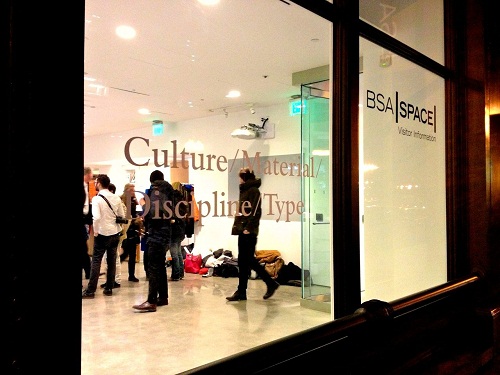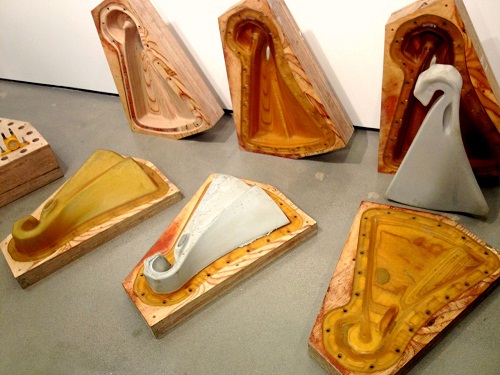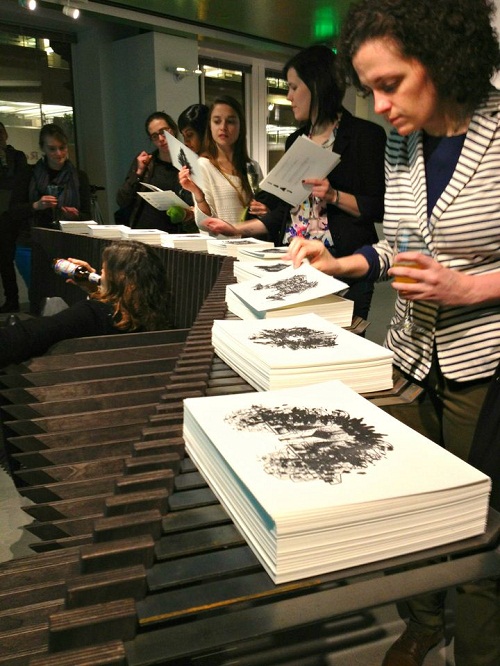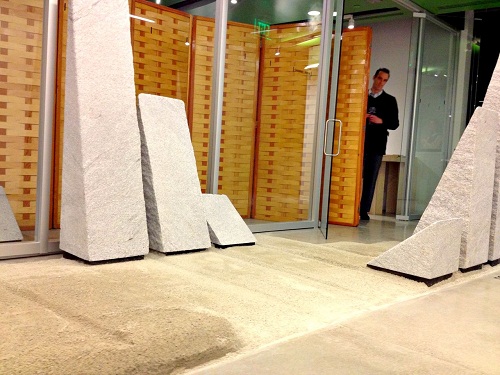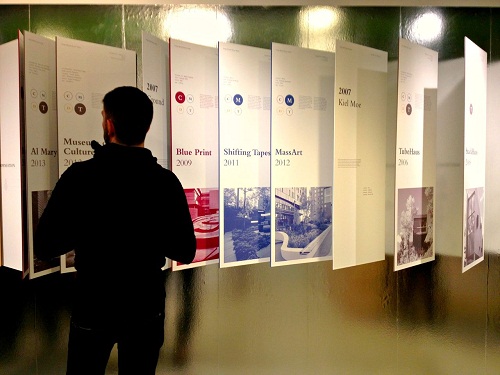Showcasing Emerging Design Talent
The third installment of Design Biennial Boston opened with panache on Thursday evening, February 21, at BSA Space, the concrete and steel architectural headquarters in the Atlantic Wharf Building on the waterfront. The Biennial, jointly presented by the Boston Society of Architects and pinkcomma gallery, is a celebration of emerging designers whose work showcases the city’s emerging design talent.
Four winners were chosen from 26 submissions. They were Brandon Clifford of Matter Design, Kiel Moe, Wilson Martin and Eden Dutcher of GroundView and Ana Miljački and Lee Moreau of Project_. For obvious reasons, the designers’ winning projects, which include a 50-foot-tall foam tower in Atlanta, a low-tech and environmentally high-performance building in rural Colorado, a playful community park in Somerville, and an installation on the U.S. prison system for an exhibition in Torino, Italy, were not on display at BSA Space.
Instead, each designer created site-specific installations for this exhibition to explain their work. That most of the designers won for projects done outside Boston was not lost on the program organizers. In fact, Chris Grimley, of over, under, says he wants us to see that much of the city’s best work is being built elsewhere. “Our big goal is to expose the city and other communities to young design talent, and show that there are a number of them living in Boston,” he said.
The crowd of more than 200 people in attendance at the opening was hardly diverse. Well-dressed artist types sporting thick-rimmed glasses waited in line for a glass of wine or hors d’oeuvres served out of mini Chinese-food containers with chopsticks. An energetic emcee spun techno-pop in the background. Brandon Clifford’s playful installation, Helix, greeted visitors upon entering the space.
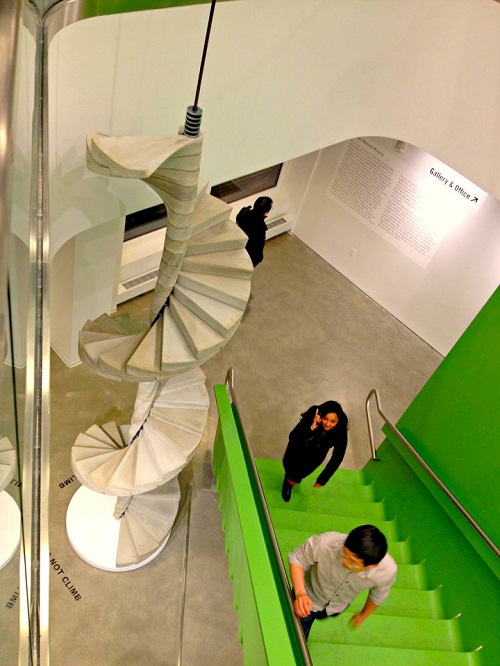
A half-scale spiral staircase, Helix wound whimsically into thin air, leading one’s eyes to the second floor where the reception was held.
At the top of the (both real and miniature) staircase, individual concrete stairs were lain out beside the molds in which they had been set, to show concrete’s transformation from liquid to solid.
To illustrate how spirals span cultures and eras, Clifford also set up a fantastic photo exhibition which juxtaposed images of rigid Mayan ziggerauts next to Gaudi’s playful curlicues and examples of classic French spiral staircases from the Chateaux de la Loire.
Kiel Moe’s installation, Stackhaus II, was also a half-size reproduction, but of a much more grounded sort. A model of a solid wood building designed for energy efficiency, it looked like a human-sized mouse maze. In his description of the installation, Moe says his architectural agenda was to develop “compositions of matter and energy that are at once more ecologically, physiologically, and architecturally ambitious.” The building was designed to be uninsulated; it uses thermal diffusivity to modulate human comfort. I’ll take his word for it.
Project_’s Rorschach installation presented a different way to think about the images we consume and our interpretation of them. Computer-generated architectural shapes were assembled and layered onto 10 different Rorschach cards for visitors to sift through.
An ever-changing Rorshach image was projected onto a screen in front of the cards. The designers had superbly turned architecture into a self-reflective psychological test.
Ground View’s installation, Ten, Eleven, Twelve, also suggested a new way of looking at common objects. Slices of granite cut into triangular pieces of various sizes were set on the ground like life-size chess pieces. Visitors were invited to rearrange the stones in their minds, and the number of people contemplating the installation in silence suggested that many were doing just that.
A retrospective of past Biennial winners was a highlight of the exhibit. Descriptions of the older projects were written out on large cards attached with hinges to the circular inner-wall of the space. The exhibit was curated by the design firm over, under, and also features furniture and sculptures by Jacob Kulin. The Design Biennial will be on display at BSA Space through May 15.
